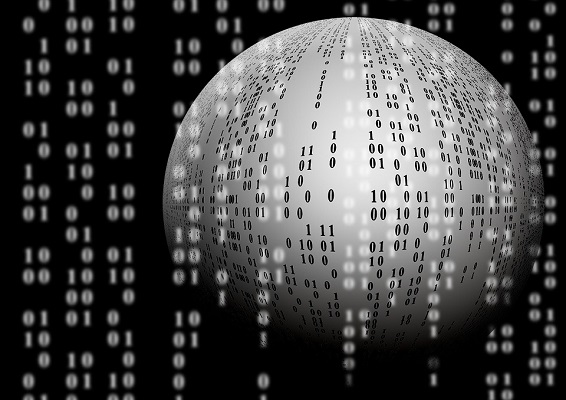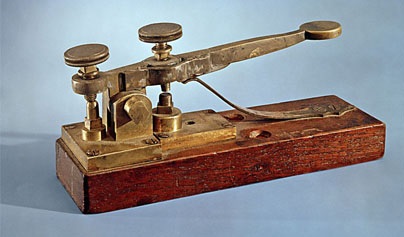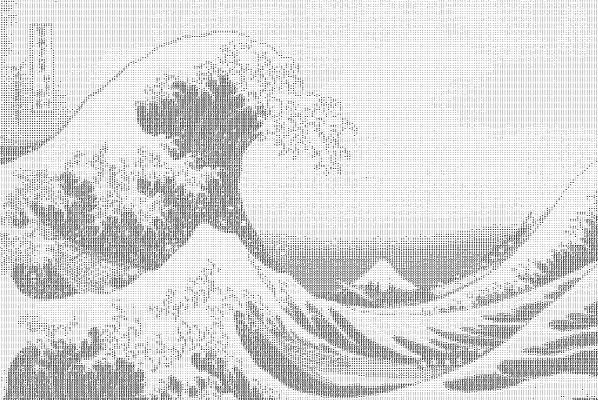
Index:
UPDATED ✅ Ascii is a character code created in 1963 as a redefinition of the one used in telegraphy at the time ⭐ ENTER HERE ⭐ and Learn more
Imagine that when you had to write a message on your mobile phone or a text for a job on your computer, you had to write a lot of zeros (0) and ones (1); what are known as binary numbers, rather than letters and words.
Well, in case you don’t know, binary numbers are the only way your computer can process all the information it receives from the outside, all the orders and commands that we send to you arrive at the processing center in the form of binaries.
But how does this information conversion happen? We will be revealing all of this in this small delivery that we have prepared for you on the “Aski” code, as this code tends to be pronounced in our Spanish language.
What is the ASCII code and what is it used for in computing?
Computers have a somewhat complex way of understanding and processing information, Basically, the data is received in the form of characters and converted to binary numbers, that is, in a cluster of ones and zeros.
The smallest units of information in these teams are the characters that are stored in 8 bits. These are usually a sequence of 8 binary figures, which can also be called octal numbers or octets.

The American Standard Code for Information Interchange, better known as ASCII for its acronym in English, is a character code based on the Roman or Latin alphabet. This is used to dictate the parameters that allow representing the characters in bits, being the case of the ASCII code, 7 bits.
In a few words we can say that the ASCII code it is a translator of information between the user and the machine.
It allows speeding up and optimizing the processing and storage of information on a computer while enhancing its communication with the outside world. It allows to represent a total of 128 characters in its regular version that go from the numbers 0 to 127, with base 10.
These units are divided into two groups, which are the code control and printables that include all the letters of the alphabet plus the symbols used on our keyboard. In the extended version of the ASCII code, twice as many can be obtained, since it reaches up to 255 with a decimal base.
This version can include graphemes from older languages such as Greek or Hebrew as needed, and in these tables the information is stored in 8 bits.
History and origin, why was ASCII created?
As sad and unfortunate as it is, human beings have only harnessed our potential more and increased our technology more in periods of wars and crises.
approximately for the year 1945 During the course of the Second World War, it was necessary to transmit messages in Morse code securely. This process was greatly streamlined because the “dot and dash” of this could also easily be equivalent to 1 and 0 of binary numbers, and for this they used the telegraphs of the time.

This first phase of what we know today as ASCII was developed by the Bell telecommunications company, now AT&T.
But, it was not until 1963 thanks to the acceptance of the “American Standards Agency”, that it was possible to reformulate many of the units that were already used in the old telegraphs, and also add many more in order to consolidate the ASCII code.
Despite the new units added including new punctuation symbols, accents and lowercase letters it was still not enough. That’s why years later IBM released the first extended version of the code in which 255 characters were reached.
ASCII Code Control Characters What are they and what are they used for?
In the ASCII code there are 33 codes that are not part of the known characters, these are the first from 0-31 and 127. Which are conceived as control units, where it is easier for you to give orders and control both the computer and other external devices. It is noteworthy that earlier in his time he could control printers and other equipment.
However, with the passage of time they have become obsolete, even so, can be activated using the ALT keys + the number in decimals, but only from the numeric keypad.
For example, one of the most common activated with this code is the @, which can be enabled using the keys ALT+64 side numeric keypad.
| Binary | Decimal | Abbreviation | Name/Meaning |
| 0000 0000 | null | null character | |
| 0000 0001 | 1 | SOH | Start of Header |
| 0000 0010 | two | STX | Start of Text |
| 0000 0011 | 3 | ETX | End of Text |
| 0000 0100 | 4 | EOT | End of Transmission |
| 0000 0101 | 5 | ENQ | Query |
| 0000 0110 | 6 | ACK | Acknowledgment of receipt |
| 0000 0111 | 7 | BEL | Doorbell |
| 0000 1000 | 8 | BS | Recoil |
| 0000 1001 | 9 | HT | horizontal tab |
| 0000 1010 | 10 | LF | line break |
| 0000 1011 | eleven | TV | Vertical Tabulation |
| 0000 1100 | 12 | FF | page feed |
| 0000 1101 | 13 | CR | Car return |
| 0000 1110 | 14 | SW | disable caps |
| 0000 1111 | fifteen | YES | turn caps |
| 0001 0000 | 16 | DLE | escape data link |
| 0001 0001 | 17 | DC1 | Device Control 1 |
| 0001 0010 | 18 | DC2 | device control 2 |
| 0001 0011 | 19 | DC3 | device control 3 |
| 0001 0100 | twenty | DC4 | device control 4 |
| 0001 0101 | twenty-one | NAK | negative acknowledgment |
| 0001 0110 | 22 | SYN | sync standby |
| 0001 0111 | 23 | ETB | End of transmission block |
| 0001 1000 | 24 | DOG | Cancel |
| 0001 1001 | 25 | MS | end of middle |
| 0001 1010 | 26 | SUB | substitution |
| 0001 1011 | 27 | ESC | Exhaust |
| 0001 1100 | 28 | FS | file separator |
| 0001 1101 | 29 | GS | group separator |
| 0001 1110 | 30 | RS | record separator |
| 0001 1111 | 31 | US | drive separator |
| 0111 1111 | 127 | OF | Suppress |
ASCII printable characters What are they and what are they used for?
In printable symbol table we can include all those digits and letters that are used in writing, leaving all punctuation marks out for now.
Similarly, these can be activated pressing the ALT keys + the exact combination of numbers in decimals. Which range from 48 – 57 for the numbers from 0 to 9, and from 65-90 for the uppercase alphabet, and from 97-122 for the lowercase alphabet.
| Numbers | ||
| Binary | Decimal | Character represented |
| 0011 0000 | 48 | |
| 0011 0001 | 49 | 1 |
| 0011 0010 | fifty | two |
| 0011 0011 | 51 | 3 |
| 0011 0100 | 52 | 4 |
| 0011 0101 | 53 | 5 |
| 0011 0110 | 54 | 6 |
| 0011 0111 | 55 | 7 |
| 0011 1000 | 56 | 8 |
| 0011 1001 | 57 | 9 |
| Capital letters | ||
| Binary | Decimal | Depicted character |
| 0100 0001 | 65 | A |
| 0100 0010 | 66 | B. |
| 0100 0011 | 67 | C |
| 0100 0100 | 68 | D |
| 0100 0101 | 69 | AND |
| 0100 0110 | 70 | F |
| 0100 0111 | 71 | G |
| 0100 1000 | 72 | H |
| 0100 1001 | 73 | Yo |
| 0100 1010 | 74 | J |
| 0100 1011 | 75 | K |
| 0100 1100 | 76 | L |
| 0100 1101 | 77 | M |
| 0100 1110 | 78 | N |
| 0100 1111 | 79 | EITHER |
| 0101 0000 | 80 | P |
| 0101 0001 | 81 | Q |
| 0101 0010 | 82 | R |
| 0101 0011 | 83 | yes |
| 0101 0100 | 84 | T |
| 0101 0101 | 85 | OR |
| 0101 0110 | 86 | v |
| 0101 0111 | 87 | W |
| 0101 1000 | 88 | X |
| 0101 1001 | 89 | Y |
| 0101 1010 | 90 | Z |
| Lowercase letters | ||
| Binary | Decimal | Depicted character |
| 0110 0001 | 97 | a |
| 0110 0010 | 98 | b |
| 0110 0011 | 99 | c |
| 0110 0100 | 100 | d |
| 0110 0101 | 101 | and |
| 0110 0110 | 102 | F |
| 0110 0111 | 103 | g |
| 0110 1000 | 104 | h |
| 0110 1001 | 105 | Yo |
| 0110 1010 | 106 | j |
| 0110 1011 | 107 | k |
| 0110 1100 | 108 | he |
| 0110 1101 | 109 | m |
| 0110 1110 | 110 | n |
| 0110 1111 | 111 | either |
| 0111 0000 | 112 | p |
| 0111 0001 | 113 | what |
| 0111 0010 | 114 | r |
| 0111 0011 | 115 | s |
| 0111 0100 | 116 | you |
| 0111 0101 | 117 | or |
| 0111 0110 | 118 | v |
| 0111 0111 | 119 | w |
| 0111 1000 | 120 | x |
| 0111 1001 | 121 | Y |
| 0111 1010 | 122 | z |
Finally, we have a single printable character that is only the “Space” number 32, which is activated with the space bar. This is among the printable characters as an invisible one because although it cannot be seen, it is always present in our texts.
| Binary | Decimal | Depicted character |
| 0010 0000 | 32 | space ( ) |
List of special ASCII characters What are they and what are they used for?
Special symbols include all symbols, punctuation marks, and mathematical operations, which are also part of the printable characters, but are separated in this way.
The groups go from the decimal number 33-47 united from 58-64 continued by 91-96 and finally from 123-126:
| Special characters | ||
| Binary | Decimal | Depicted character |
| 0010 0001 | 33 | ! |
| 0010 0010 | 3. 4 | “ |
| 0010 0011 | 35 | # |
| 0010 0100 | 36 | $ |
| 0010 0101 | 37 | % |
| 0010 0110 | 38 | & |
| 0010 0111 | 39 | ‘ |
| 0010 1000 | 40 | ( |
| 0010 1001 | 41 | ) |
| 0010 1010 | 42 | * |
| 0010 1011 | 43 | + |
| 0010 1100 | 44 | , |
| 0010 1101 | Four. Five | – |
| 0010 1110 | 46 | . |
| 0010 1111 | 47 | / |
| 0011 1010 | 58 | : |
| 0011 1011 | 59 | ; |
| 0011 1100 | 60 | |
| 0011 1101 | 61 | = |
| 0011 1110 | 62 | > |
| 0011 1111 | 63 | ? |
| 0100 0000 | 64 | @ |
| 0101 1011 | 91 | [ |
| 0101 1100 | 92 | |
| 0101 1101 | 93 | ] |
| 0101 1110 | 94 | ^ |
| 0101 1111 | 95 | _ |
| 0110 0000 | 96 | ` |
| 0111 1011 | 123 | { |
| 0111 1100 | 124 | | |
| 0111 1101 | 125 | } |
| 0111 1110 | 126 | ~ |
ASCII vs Unicode What are the main differences between each?
Unicode can be said to be an improved version of ASCII, since Unicode includes the same characters as ASCII without modifying any, but supports a larger number of these.
Its main objective is to be compatible with all equipment, but let’s see what are the basic differences that distinguish these 2 codes:
- The main difference is that Unicode binary sequences are much longer and heavier than ASCII, going up to 32 bits while ASCII only goes up to 7 bits.
- Another difference between these codes is the number of characters, ASCII being only 128 while Unicode reaches up to 221 characters in its standard version.
- Unicode is prepared to support multiple languages simultaneously unlike ASCII code.
Art ASCII What is this kind of art that is done with this code?
This is an unconventional discipline that can be called a “Digital pointillism”.

Basically, the artist uses all the printable characters provided by the code, and in a simple text editor puts his imagination to work until he achieves works that are truly worthy of admiration.
This type of art has been used a lot in old consoles that did not have graphic processing capacity like today’s. It was also present in the designs of the first video games, and in some cases it was useful for the graphical representation of diagrams.

Although the concept of this sounds quite basic, Art ASCII is one of the most versatile currents, and can be combined with others to create pieces of landscaping, realism, cubism and a long etcetera. This has even earned it to be used as a filter in multiple applications and multimedia editing software.
In addition, it had a strong influence on internet culture. You may not have realized it, but inside you are an ASCII artist.. We’ve all texted those combinations of semicolons followed by a closing parenthesis to wink at a contact ( 😉 ). These expressions are part of this art, and were the first “emoticons” in history.
Its influence is so great that both WhatsApp and Telegram or Facebook Messenger allows you to add an emoticon by entering its ASCII version. However, it is also one of the most undervalued art forms.
Computing